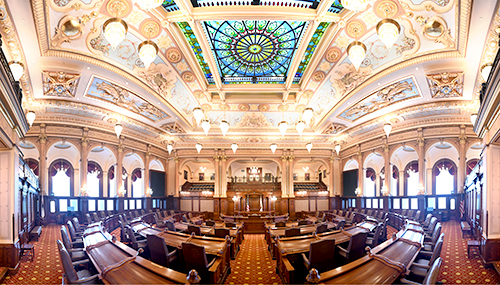 CHICAGO – Temperatures outside are falling quickly, and State Senator Robert Martwick (D-Chicago) is encouraging homeowners to check that their heaters are in working order, as well as their carbon monoxide and smoke detectors.
CHICAGO – Temperatures outside are falling quickly, and State Senator Robert Martwick (D-Chicago) is encouraging homeowners to check that their heaters are in working order, as well as their carbon monoxide and smoke detectors.
“Take a few minutes out of your day to check the air filters in your furnace and smoke detectors in your home,” Martwick said. “Many fires are started around faulty heating equipment in the home, and I recommend following proper safety practices to keep you and your family safe this winter.”
Between 2012 and 2016, U.S. fire departments responded to an average of 52,050 fires each year involving heating equipment, accounting for 15% of all reported home fires during that time. Half of heating-related fires are reported during December, January and February.
It’s not just fires that pose a danger during these cold months. Carbon monoxide is a colorless, odorless gas that is only detectable by special detectors and alarms. These alarms, just like smoke alarms, need to be tested monthly to ensure they are working properly.
Symptoms of carbon monoxide poisoning include headache, fatigue, shortness of breath, nausea and dizziness. If you are experiencing these symptoms, if you smell natural gas leaking in your home, or if your carbon monoxide alarm activates, evacuate the home immediately and open windows on the way out, if possible.
The Illinois Office of the State Fire Marshal recommends homeowners keep these tips in mind when it comes to winter heating safety:
- Have heating equipment and chimneys cleaned and inspected every year by a qualified professional.
- Change furnace filters frequently.
- Keep interior and exterior air vents clear of blockages or obstructions.
- Keep anything that can burn at least three feet away from heating equipment, like a furnace, fireplace, wood stove or portable space heater.
- Test smoke and carbon monoxide alarms at least once a month and be familiar with the sounds they make.
- Install carbon monoxide and smoke detectors on each floor of your home and within 15 feet of each sleeping area.
- Check the manufacturer’s instructions for information on replacement of carbon monoxide and smoke detectors.
For more tips and information on winter heating safety, visit the Illinois Office of the State Fire Marshal website.













 © 2025 Illinois Senate Democratic Caucus
© 2025 Illinois Senate Democratic Caucus